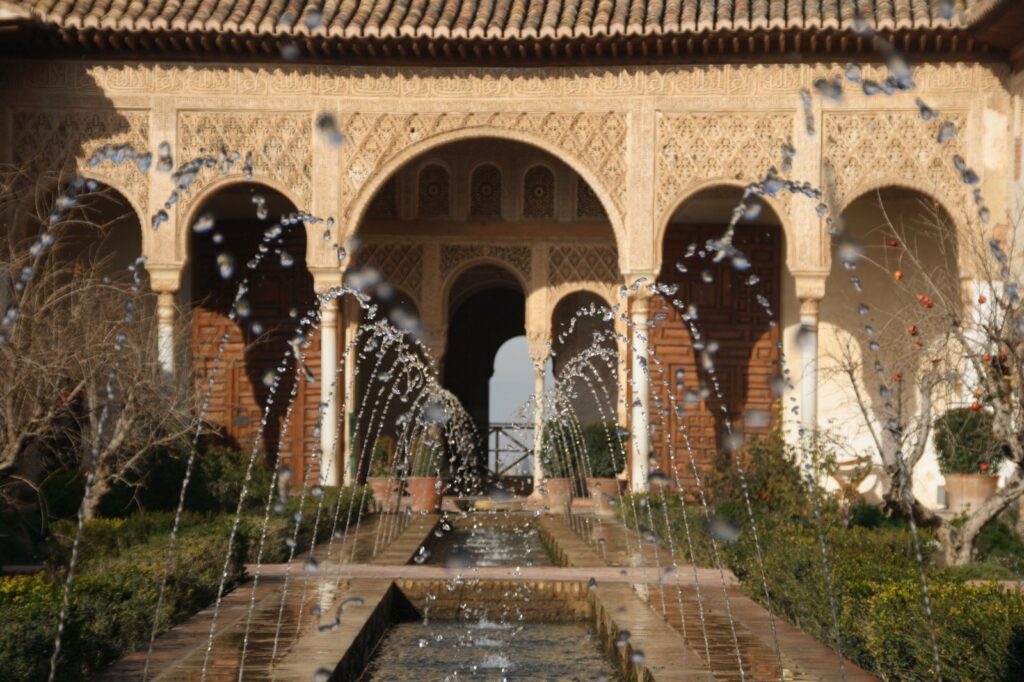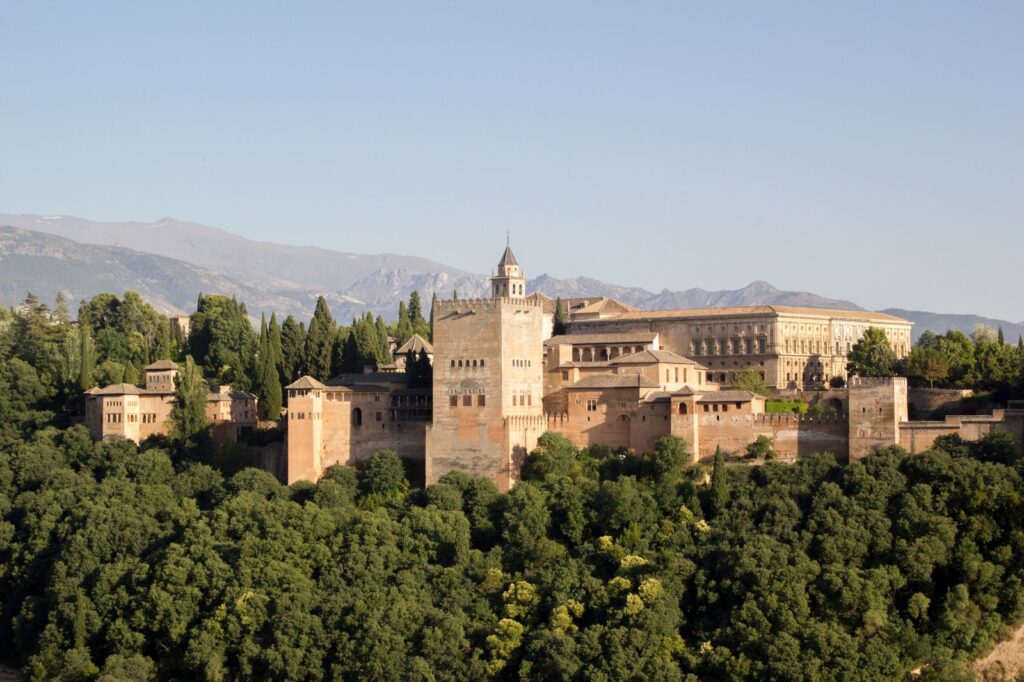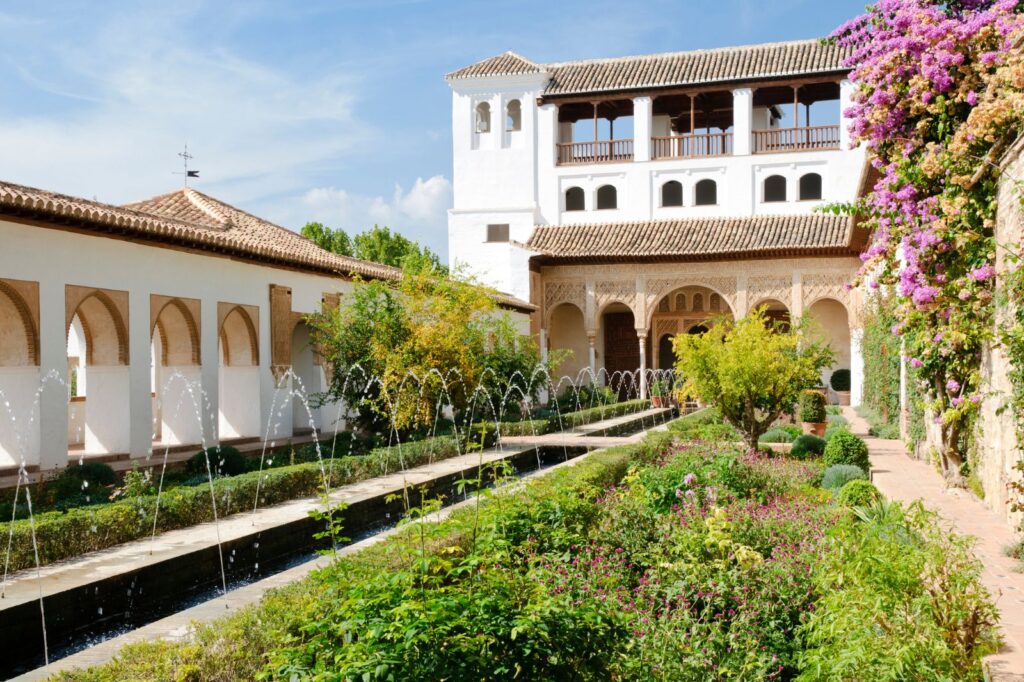
Exploring Moorish Granada: Courtyards, Fountains, and Palaces

Granada does not reveal herself all at once. She waits, shimmering in the late afternoon light on ancient stone façades, in the cool hush of jasmine-scented courtyards, in the music of water trickling from marble fountains. This is the soul of Moorish Granada—a city where history and poetry still linger in every corner.
For centuries, Granada was the jewel of Al-Andalus, the last Moorish kingdom in Spain. The Nasrid dynasty, which ruled from the 13th to the 15th centuries, left behind more than monuments. They left a philosophy: that beauty, spirituality, and nature could be woven into a single way of life. Today, visitors still walk through that vision, exploring palaces, gardens, and neighborhoods where Moorish culture endures.
The Alhambra: Spain’s Top Attraction

The Alhambra is more than a palace. It is a city within a city, rising above Granada like a dream in stone. Inside the Nasrid Palaces, every surface tells a story: stucco carved with Quranic verses, domes shaped like night skies, walls patterned with endless geometry.
The Court of the Lions, its central fountain carried on the backs of twelve marble lions, is the most iconic. But wander deeper, and you discover quieter spaces: the long reflective pool of the Court of the Myrtles, or the Hall of the Ambassadors, where sultans once received envoys under a cedar dome carved to represent the heavens.
Did You Know?
The word Alhambra comes from the Arabic al-ḥamrā, meaning the red one,
a reference to the reddish hue of its fortress walls at sunset.
The Generalife: A Garden of Paradise
If the Alhambra was power, the Generalife was peace. This summer palace allowed Nasrid rulers to retreat into gardens that still bloom with roses, jasmine, and orange trees. Here, architecture and nature blend seamlessly.
In the Patio de la Acequia, a long pool runs between rows of fountains that arc gracefully into the air. Paths shaded by cypress trees lead to intimate courtyards where the air is cooler and the scent of blossoms lingers.
Garden Philosophy
For the Moors, gardens were earthly paradises. The use of water, shade, and fragrance wasn’t only practical; it reflected Islamic ideas of heaven as a place filled with flowing rivers and flowering trees.
The Albaicín: Granada’s Living Moorish Quarter
On the opposite hill, the Albaicín keeps Moorish Granada alive. This neighborhood of winding alleys and whitewashed houses was once filled with palaces, mosques, and hammams. Today, it remains a labyrinth of hidden squares, cobbled streets, and breathtaking viewpoints.
Climb to the Mirador de San Nicolás, where locals and travelers gather at sunset. The Alhambra glows golden against the snowy Sierra Nevada—a view that feels like stepping into a painting.
A Secret Within the Walls
Many Albaicín houses are cármenes—private homes that conceal courtyards with fountains, fruit trees, and small gardens. From the street, they look plain. Inside, they reveal a world of quiet beauty.
The Language of Water

Water is Granada’s eternal voice. The Moors engineered acequias—irrigation channels that carried snowmelt from the Sierra Nevada into the city. They built fountains not just as decoration, but as symbols of life, purity, and paradise.
At the Alhambra, water once flowed through hidden channels, cooling rooms and feeding gardens. In the Albaicín, small fountains still gurgle in quiet squares. To pause beside them is to understand that water, more than stone or tile, is what made Moorish Granada a city of dreams.
Engineering Genius
The Moors created hydraulic systems that used gravity to move water across hillsides. Some of these irrigation networks are still in use in the Alpujarras villages today.
Experiencing Moorish Granada Today
Exploring Moorish Granada means embracing its rhythm. Walk the Alhambra in the hush of morning, before the crowds arrive. Wander the Generalife gardens in the midday sun, letting the fountains cool the air around you. Get lost in the Albaicín at dusk, when lanterns glow and guitar notes drift through open windows.
And look beyond the city: in the Alpujarras mountains, villages still follow Moorish irrigation systems. Terraces of olive and almond trees climb steep hillsides, a living reminder of Nasrid ingenuity. Granada is not just a museum of the past—it is a culture that endures.
Private Villa: La Esperanza Granada
To truly experience Moorish Granada, travelers need time, space, and a retreat that echoes the city’s spirit. La Esperanza Granada, a private hacienda in the nearby Lecrín Valley, offers exactly that. Built in the style of an Andalusian palace, with courtyards, fountains, and gardens inspired by the Alhambra, it reflects the beauty visitors come to Granada to see.
By day, discover Moorish Granada’s treasures. By evening, return to the hacienda, where lemon trees, star-shaped fountains, and mountain views create your own private Generalife. Here, Moorish Granada becomes not only something you visit—it becomes something you live.
